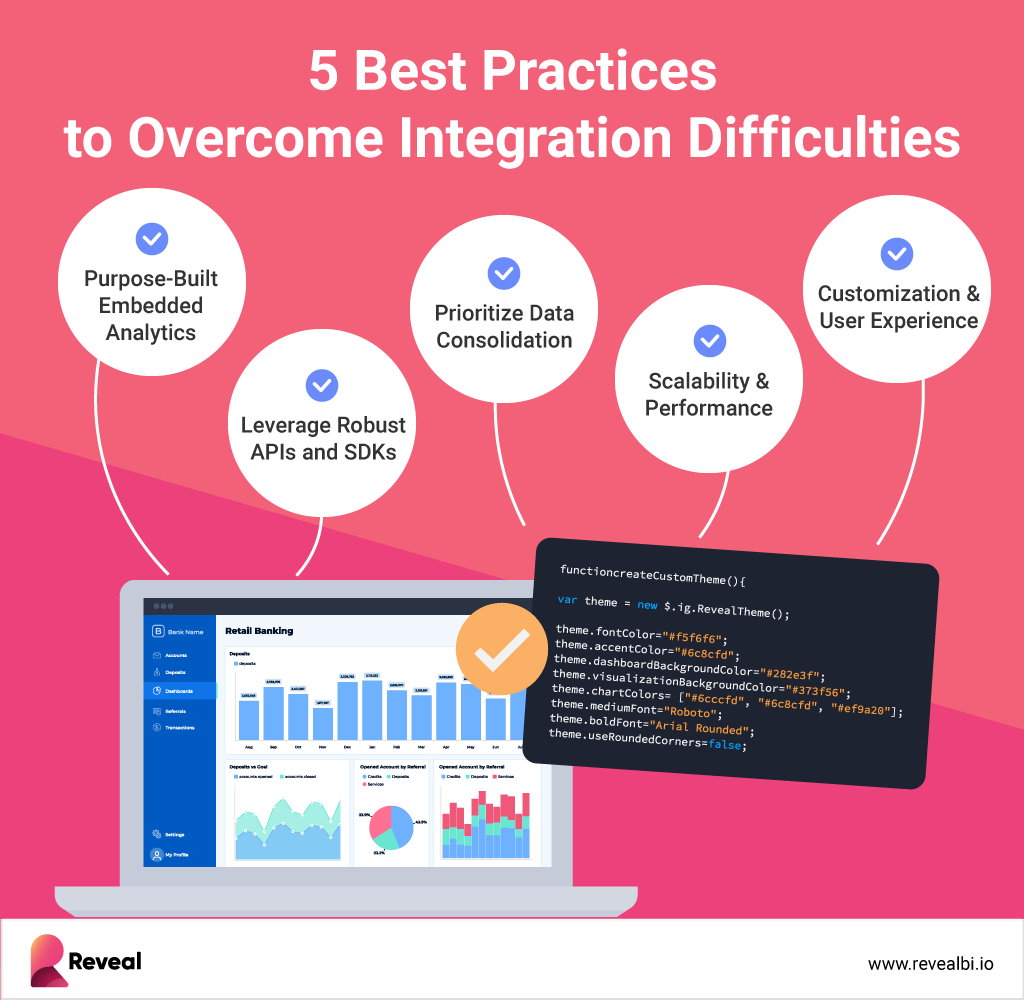
Scriptly Helps Pharmacies Identify Trends in Real Time with Reveal
Embedded analytics has become a vital component of modern applications, providing users with real-time insights that drive smarter decisions. However, integrating these analytics seamlessly into your existing systems is often easier said than done.
Executive Summary:
This blog explores the most common integration challenges faced by software vendors and offers practical solutions to integrate analytics in weeks instead of months or even years.
When an embedded analytics solution doesn’t seamlessly integrate with your application, it can cause significant delays and strain resources. Instead of reaping the immediate benefits of embedded analytics, your team may find themselves jumping through hoops just to make it work. This can involve extensive customization, additional coding, and ongoing maintenance—all of which consume valuable time and divert resources from your core product development. The more complex the integration process, the longer it takes to go to market, delaying the potential value and insights that embedded analytics are supposed to deliver.
Here are some of the most common embedded analytics integration challenges software vendors face:
Compatibility Issues
One of the most significant hurdles in embedding analytics is ensuring compatibility across various legacy systems and diverse tech stacks. Integrating a modern analytics solution with outdated infrastructure can lead to performance bottlenecks and a lack of cohesion within the application.
Disjointed User Experience
Poor integration can result in a fragmented user experience where analytics feels like a separate tool rather than an integral part of the application. This disjointed experience can lead to user frustration, decreased adoption, and, ultimately, reduced ROI of your embedded analytics project.
Consolidating Data from Various Sources:
Data silos are a major challenge, especially when pulling information from multiple sources. Without a seamless way to consolidate and harmonize this data, users are left with incomplete insights, hindering their ability to make informed decisions.
API and Data Connectivity Issues
Ensuring smooth data flow between disparate data sources and your application is another common challenge. Inconsistent APIs, limited connectivity options, and data synchronization issues can all contribute to a disjointed and unreliable analytics experience.
Performance and Scalability
As your application grows, so do the demands on your embedded analytics. Ensuring that your analytics solution can scale without compromising performance is crucial, yet challenging. Especially when dealing with large volumes of data and complex queries.
Customization
Every business has unique needs and the ability to customize analytics to meet these needs is essential. However, many analytics solutions offer limited customization options, forcing businesses to either settle for a one-size-fits-all approach or invest in costly, time-consuming custom development.
To successfully overcome these integration challenges, consider the following best practices:

Integration difficulties in embedded analytics are real, but not unbeatable. By understanding the common challenges and implementing best practices, you can overcome these obstacles into opportunities for growth and innovation. With the right embedded analytics solution, like Reveal, you can deliver a seamless user experience and increase the ROI of your application.
Back to Top